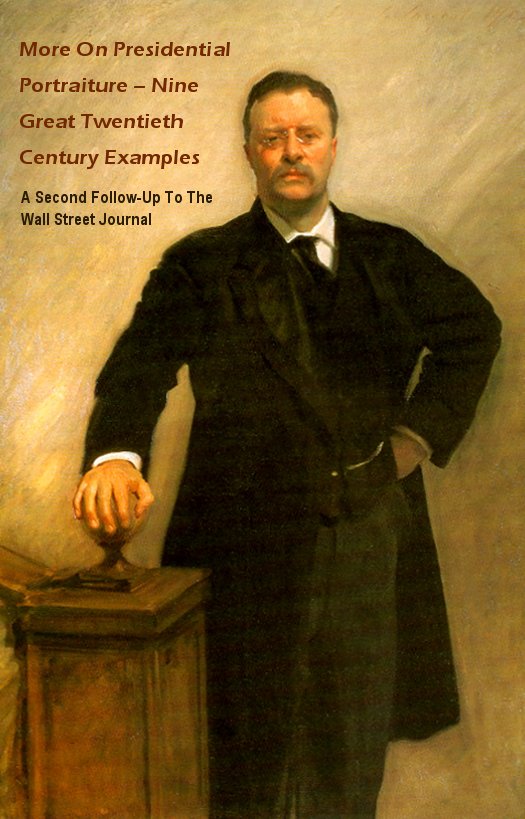|
|
 |
| |
Theodore Roosevelt, 1903
John Singer Sargent.
Oil on canvas, 58 x 40 inches.
The White House, Washington, D.C. |

Woodrow Wilson, 1917
John Singer Sargent.
Oil on canvas, 60 x 43 inches.
The White House,
Washington, D.C.
Leigh correctly senses a turning point
in the work of the great John Singer
Sargent (1856-1925), who went twice
to the White House: in 1903, to paint
Theodore Roosevelt, and again in 1917
to record Woodrow Wilson. Both paintings
are notable in the White House collection
in that both are totally devoid of
any background elements. In the Roosevelt
(shown at the beginning of this article),
we have the newell post of the Grand
Staircase, to allow the President
to place his right hand there in a
commanding gesture. In the Wilson,
only the merest suggestion of the
presidential desk emerges from an
impenetrable dark background. Both
paintings otherwise eschew the "trappings
of office" and concentrate on
the personality, character, and appearance
of the man temporarily occupying the
most powerful office on earth.
|
|
|
|
|
|
|
| |
|
|
|
Site
created by A Stroke of Genius, Inc.
|